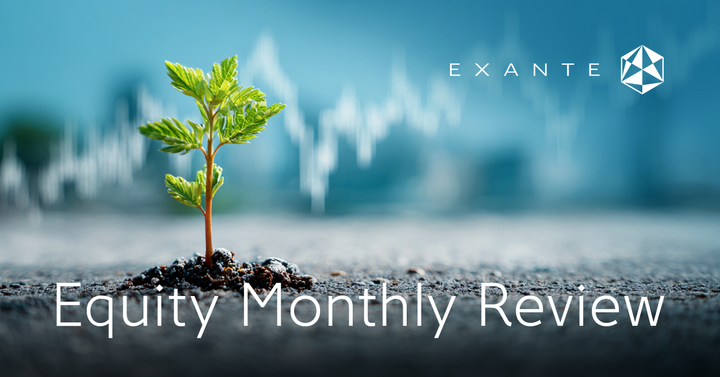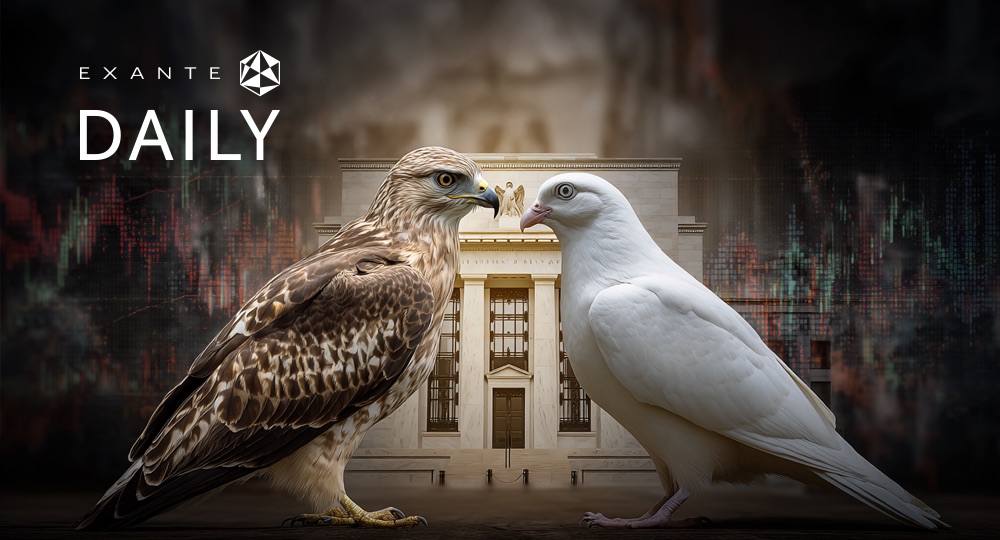 Horacio Coutino, Equities investment writer
Horacio Coutino, Equities investment writer
Market indices are not static. At the beginning of the 2000s, Europe's top 10 companies by market capitalization were primarily in the telecommunications, oil, or banking sectors. However, by 30th April of 2020, a significant shift had occurred. The top 10 European stocks in the Stoxx Europe 600 index no longer included companies from these sectors.
Instead, the European index became dominated by what Goldman Sachs termed the GRANOLAS– an acronym representing the 11 largest European companies by market cap at that time: GSK, Roche, ASML, Nestle, Novartis, Novo Nordisk, L'Oreal, LVMH, AstraZeneca, SAP, and Sanofi.
While financial media predominantly focuses on the US-based "Magnificent Seven" tech giants, investors can expand their horizons (and diversify their risk) and consider alternative narratives. Is the future solely defined by these seven companies? Or are there other stories yet to be told? And may those other stories be in other locations and industries? As consumption patterns evolve, is technological innovation the exclusive domain for future growth?
In this context, Morgan Housel's insightful definition of a forecast as a "number from today multiplied by a story about tomorrow" resonates. It emphasises that anticipating the future requires not only quantitative analysis but also a nuanced understanding of the narratives shaping various sectors and industries. This approach is particularly relevant in risk management, as it highlights the importance of diversification beyond solely numerical metrics. By considering a wider range of narratives and potential outcomes, investors can better safeguard their portfolios against unexpected hiccups and enrich the flavour of their investment strategies.
The emergence of Europe's GRANOLAS as dominant players in the STOXX Europe 600 index is increasingly tempting for investors. Their combined market capitalization within the index is comparable to the collective weight of traditional value-cyclical Stoxx (ICB) sectors, including Energy, Basic Resources, Banks, Financial Services, and Autos. As a group, they present an enticing opportunity to explore diverse sectors where future growth and innovation may arise.
Given the market concentration held by the GRANOLAS within the STOXX Europe 600, comparisons to the Magnificent Seven (MAG7) are inevitable. However, our initial analysis of the GRANOLAS reveals key distinctions that warrant further exploration.
Capturing GRANOLAS’ flavours (diversification)
The GRANOLAS exhibit diversification across four distinct Factset sectors: Health Care, Consumer Products and Services, Technology, and Food, Beverage, and Tobacco. Health Care is the predominant sector, encompassing six of the eleven GRANOLAS: Novo Nordisk, Roche, AstraZeneca, Novartis, GSK, and Sanofi.

At a Company level, Novo Nordisk represents 20.5% of the total market capitalization of the GRANOLAS, followed by LVMH at 12.5% and ASML at 12.0%.
As of 22nd July, the total market capitalization of GRANOLAS was €2.803 trillion, equivalent to 19.9% of the total market value of the Stoxx Europe 600 Index.
This group of companies, in the last twelve months ending in Q1 2024, generated €535.7 billion in sales, representing 5.0% of the net sales generated by the index, and at an aggregate net income margin of 17.2%, they generated 11.7% of the index’ aggregate earnings at the tune of €9.2 billion.
How have they performed this year?
So far this year the performance of GRANOLAS has been mostly positive with 8 of its constituents up, led by ASML at 45.1%, followed by Novo Nordisk at 39.6% and SAP at 34.6%. The underperforming stocks are L’Oreal at -9.8%, Nestlé at 4.5%, and LVMH at -3.8%.
Each of the 11 GRANOLAS has its own story, and as any story they’re ever evolving, and are exposed to significant market forces, local and foreign. ASML and SAP are two names that have been related to the AI trade, as ASML’s unique chip-making equipment is powering the latest generation of semiconductors, and SAP is in a unique position to access vasts amounts of customer data and is in the process of developing AI packages that could accelerate its revenue growth. Novo Nordisk has proven to be one of the most delectable of the GRANOLAS as it has benefitted from its creation of the diet plan, Wegovy.
Conversely, LVMH’s sales in Asia excluding Japan, which is dominated by China, fell 14% in Q2, amid luxury demand moderation in the world’s second-largest economy. For FY 2023, according to Factset, China accounted for 7.1% of total revenues. Similarly, L’Oreal, whose Q2 earnings release is scheduled for 30th July, has greater exposure to this headwind, as for FY 2023, China accounted for 19.4% of its total revenue.

Source: Factset
Global leaders with no home bias
Despite their European listings, the GRANOLAS derive an amazing 75.7% of their revenues from outside Europe, with 35.7% originating in the United States. This sharply contrasts with the Stoxx Europe 600 Index, which generates 55.0% of sales within Europe. Notably, ASML's European sales represent a mere 3.3% of their total revenue. Within the GRANOLAS, SAP exhibits the greatest reliance on European markets, accounting for 36.5% of its revenue. What is increasingly clear is that this group of companies is actively expanding beyond Europe to capitalise on opportunities in high-growth regions.

Source: Factset
The GRANOLAS maintain a truly global footprint, with 59.7% of their assets located outside their countries of listing. We consider them to be authentic multinational corporations that happen to be listed in Europe, rather than primarily European-focused enterprises. They do not simply manufacture products and services in Europe for export to the US, but operate as diversified entities with a global asset base.

Source: Factset
Over the past five years, the GRANOLAS have significantly outperformed the Stoxx Europe 600 Index by more than 40 percentage points. Year-to-date, this outperformance continues, exceeding the index by 1.5 percentage points. Notably, throughout the year, the GRANOLAS' accumulated performance has consistently surpassed that of the index.
The strength of these companies is derived from several appetising attributes.
Superior earnings profile
Over the past 5 years, the GRANOLAS' earnings growth, as measured by Earnings Per Share (EPS), has significantly outpaced the Stoxx Europe 600. Accumulated EPS growth for the GRANOLAS reached 56.1% (CAGR 11.8%), while the index grew by 40% (CAGR 8.8%). Furthermore, unlike the Stoxx Europe 600, which experienced a decline in EPS from September 2019 to November 2021 due to the COVID-19 pandemic, the GRANOLAS' EPS remained resilient, demonstrating no decline from the base level in mid-July 2019.

Source: Factset
This robust earnings growth has supported strong capital returns to investors, with GRANOLAS' dividend growth surpassing the broader index by 10.9 percentage points over five years, reaching a cumulative 32.4% (CAGR 7.3%) versus 21.5% (CAGR 5.0%). Mirroring the EPS trend, dividend per share growth has remained relatively steady.

Source: Factset
Reinvesting in the future
Despite impressive dividend growth, the group lags behind earnings growth by 1.5% CAGR over the past five years. This discrepancy can be attributed to significant internal investments. The GRANOLAS' Growth Investment Ratio, representing the share of cash flows allocated to Capital Expenditures and R&D Expenses, stands at 77.3%, surpassing the Stoxx Europe 600 by 13 percentage points. Notably, SAP, GSK, and ASML lead the GRANOLAS in allocating resources for future growth, dedicating 112.5%, 110%, and 108.8% of their cash flows, respectively.
This high level of reinvestment has translated into a superior return on invested capital (ROIC) for some GRANOLAS companies. At 29.8%, their collective ROIC is nearly double that of the Stoxx Europe 600 (15.8%), reflecting the effectiveness of their capital allocation strategies.


Source: Factset
GRANOLAS' sweet profitability is further evident in their healthier EBITDA margins. Their market-cap weighted average EBITDA margin of 34.4% significantly surpasses the Stoxx Europe 600's 25.5% by nearly 10 percentage points. Within GRANOLAS, SAP (25.5%), L'Oreal (23.0%), and Nestlé (20.9%) exhibit margins lower than the index average.

Source: Factset
In the prevailing environment of higher for longer interest rates, the GRANOLAS' debt levels warrant examination. Over the last five years, they have maintained an average Net Debt/EBITDA ratio of 0.98x (currently 0.89x), notably lower than the Stoxx Europe 600's 5-year average of 2.14x (currently 2.19x). Even compared to the S&P 500's 5-year average of 1.71x (currently 1.60x), GRANOLAS' leverage remains significantly more conservative.
The current interest rate environment continues to favour GRANOLAS, as they can leverage their cash reserves. For other companies, rising debt costs will likely pressure margins and necessitate a focus on deleveraging, particularly for those with longer durations and cyclical business models.

Source: Factset
From a factor perspective, GRANOLAS’ qualities constitute a typical Quality trade, positively correlated with attributes seen in Growth and Defensive companies. This type of company tends to outperform when economic growth slows.
A closer look: GRANOLAS and MAG7
MAG7's outperformance since 2021 is striking, reaching 95.8%, or 28.2 percentage points higher than the benchmark. However, it's crucial to acknowledge that this divergence in performance between these two groups began in early May, amplified by the increased risk premia in European assets following the EU parliamentary elections, which further escalated risk-off sentiment in the region.
During the same period, the average GRANOLAS outperformance reached 11.6 percentage points, and their current 1-year average outperformance remains positive at 1.5 percentage points.

On a risk-adjusted basis, MAG7's performance is less remarkable, as GRANOLAS have demonstrated lower volatility. Both the 3-year and 1-year average realised volatility of GRANOLAS are significantly lower, at 15.5% and 13.3% respectively, compared to MAG7's 1-year average of 23.4% and 3-year average of 27.7%. Currently, GRANOLAS' 1-year realised volatility stands at 12.7%, lower than MAG7's 20.3%.
Due to MAG7's recent outperformance, their current Return-to-Vol ratio is 2.12x, considerably higher than GRANOLAS' 0.93x. However, this contrast is less pronounced when comparing the 3-year average Return-to-Vol of both groups, with MAG7 at 0.97x and GRANOLAS at 0.92x.

Higher realised volatility also results in a higher coefficient of variation (CV) for the Return-to-Vol ratio. MAG7's 3-year average CV for its Return-to-Vol ratio is significantly higher at 0.74, than the GRANOLAS' 0.39. This indicates a wider dispersion in the risk-reward profile of MAG7, suggesting a less stable return-to-vol ratio over time compared to GRANOLAS.
From a portfolio construction perspective, the GRANOLAS can serve as valuable assets to enhance the Sharpe ratio and mitigate risks, particularly during periods of increased volatility. Should we enter a high volatility environment, GRANOLAS can demonstrate resilience relative to the broader market, consistent with their 5-year performance.



Risks to GRANOLAS
Economic Slowdown in China. The GRANOLAS exhibit a substantial international presence, with 33% exposure to the Asia-Pacific region (compared to 21% for the STOXX 600). While precise exposure to China isn't explicitly reported, a reasonable estimate suggests that 10% of their revenues originate from China, on average. Current trade tensions with China are not deemed a major concern for all GRANOLAS, and their defensive nature could offer protection against potential stagflation in China. However, LVMH, L'Oréal, and ASML have significant exposure to Mainland China. They are also exposed to Taiwan, which has itself seen rising geopolitical risk this year. L'Oréal's Q4 sales shortfall, partly attributed to reduced spending by Chinese tourists abroad, coupled with a 5% stock decline, highlights growing concerns that the headwinds in China may be structural rather than cyclical.
US Election. The GRANOLAS maintain substantial exposure to the US market. A Republican presidency could escalate risks related to tariffs on European goods, with Trump proposing a 10% across-the-board tariff on US imports. Although the GRANOLAS might seem susceptible to such tariffs, they hold, on average, 34% of their assets in the US. This suggests that they function more as multinational corporations listed in Europe, rather than entities solely manufacturing in Europe and exporting to the US. In the event of a Republican victory, the GRANOLAS could potentially benefit from tax cuts. However, they face risks related to the US election due to their heavy exposure to the Healthcare sector, which often faces challenges during presidential election years due to the politicisation of medical care costs. Nevertheless, current opinion polls indicate that neither political party is likely to secure a significant majority in Congress, mitigating the chances of major legislative overhauls in the healthcare industry.
European Political Risk. The recent parliamentary election in the EU has brought political risk to the forefront of investor concerns. The snap election in France, resulting in a hung parliament, triggered a rise in risk premia for French assets. This political paralysis and the ensuing uncertainty regarding budget impasse have extended their impact across various European asset classes. The French contagion has affected European equities more broadly, underscoring how similar political events can elevate risk premia for the GRANOLAS. These companies are susceptible to changes in regulation and fiscal policy, which can be influenced by shifts in the political landscape.
This article is provided to you for informational purposes only and should not be regarded as an offer or solicitation of an offer to buy or sell any investments or related services that may be referenced here.
While every effort has been made to verify the accuracy of this information, EXT Ltd. (hereafter known as “EXANTE”) cannot accept any responsibility or liability for reliance by any person on this publication or any of the information, opinions, or conclusions contained in this publication. The findings and views expressed in this publication do not necessarily reflect the views of EXANTE. Any action taken upon the information contained in this publication is strictly at your own risk. EXANTE will not be liable for any loss or damage in connection with this publication.
Tento článek je poskytován pouze pro informační účely a neměl by být považován za nabídku nebo výzvu k nákupu nebo prodeji jakýchkoli investic nebo souvisejících služeb, jejichž odkazy se v něm můžou vyskytovat. Obchodování s finančními nástroji je spojeno se značným rizikem ztráty a nemusí být vhodné pro všechny investory. Dřívější produktivita není spolehlivým ukazatelem budoucí produktivity.






